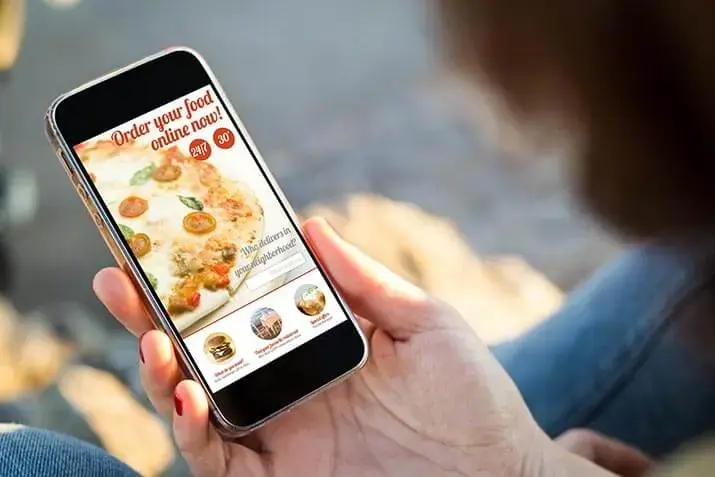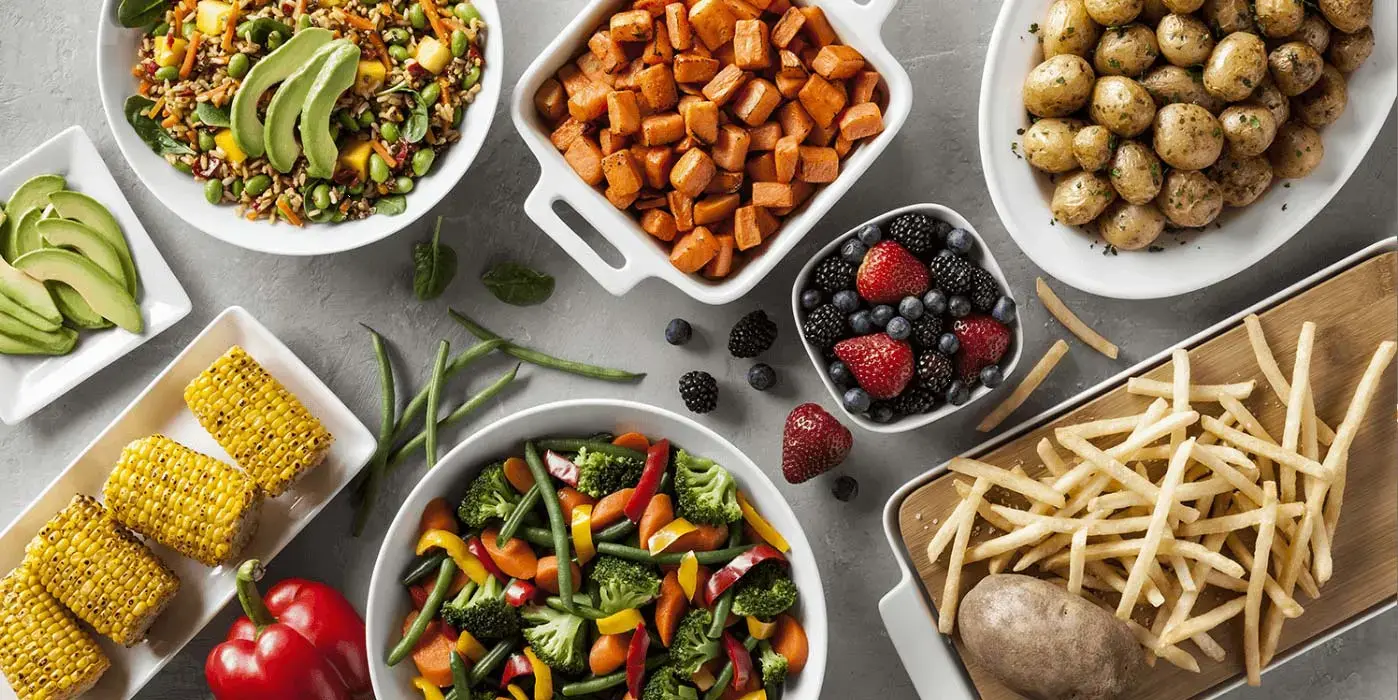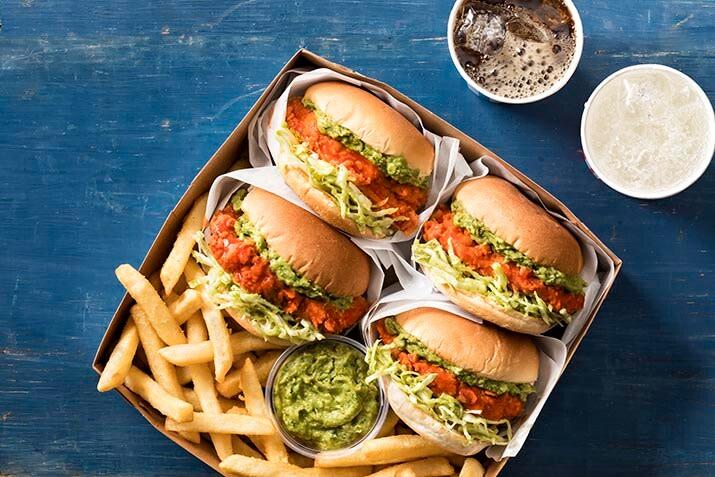Marketing
Restaurant Apps: The 7 Must-Have Features of Effective Apps in 2024
1/23/2024

Well-designed restaurant apps can be game-changers, offering customers an easy way to browse menus, place orders, and enjoy a variety of other features that add value to their dining experience.
But what exactly makes restaurant apps stand out?
In this post, we delve into the seven essential features your restaurant app must have to deliver a better customer experience. From hassle-free registration and intuitive menu displays to secure payment options and engaging loyalty programs, we'll cover the key elements that meet and exceed customer expectations.
1. Make registration easy in restaurant apps
The registration process is often the first interaction a customer has with restaurant apps. This initial experience can set the tone for their entire journey. A smooth, straightforward sign-up process not only reduces barriers to entry but also reflects the efficiency and customer-centric approach of your restaurant.
To ensure a user-friendly registration, consider the following strategies:
Minimal data entry: Request only essential information like name, email, and phone number. Lengthy forms can be off-putting and may lead to abandonment before the registration is complete.
Social media integration: The option to sign up using social media accounts (like Facebook or Google) can significantly streamline the process.
Guest checkout option: For customers in a rush—or those not ready to commit to an account—a guest checkout feature is crucial.
Privacy assurance: Address privacy concerns upfront. Make it clear how customer data will be used and protected.
2. Engage your customers with an intuitive menu display
Of course, restaurant apps are about showing what dishes are available. But they're also about presenting them in a way that is easy to navigate and visually appealing. This aspect of the app plays a crucial role in simulating the experience of browsing a physical menu, capturing the essence of your restaurant's ambiance and culinary offerings.
Consider these elements when designing your menu display:
High-Quality Images: Visual appeal can significantly influence a customer's decision-making process. Ensure that the photos accurately represent the dishes to set realistic expectations. Learn how to take better menu photos.
Clear, Concise Descriptions: Each menu item should have a clear and concise description, highlighting key ingredients and any unique preparation methods.
Easy Navigation: Organize the menu into logical categories such as appetizers, mains, desserts, and beverages. Consider adding filters and search functionality to help users quickly find their preferred dishes or explore options based on specific criteria like 'gluten-free' or 'vegan.'
Dynamic Layouts: The menu should be easily readable and navigable whether the customer uses a smartphone or tablet.
Specials and Recommendations: Highlight specials, chef's recommendations, or bestsellers to guide new customers or promote dishes with higher margins or seasonal specialties. Click here for a deeper dive into menu engineering for printed and digital menus.
Beyond the basic layout, consider adding features like personalization to tailor your menu display based on past orders. Offering the menu in multiple languages can also be a significant advantage in multicultural areas.
3. Offer real-time order tracking to keep them in the loop
Customers love restaurant apps that give them the ability to track their orders from preparation to delivery. (Check out the Domino's app to see this feature in action.) It keeps the customer informed and significantly reduces the number of inquiries about order status, freeing up staff to focus on service quality.
Consider these elements for a robust order-tracking system:
Live updates: Offer live status updates at each stage of the order process - 'Order Received,' 'In Preparation,' 'Ready for Pick-up,' or 'Out for Delivery.'
Estimated time of arrival (ETA): Providing an estimated delivery or pick-up time helps manage customer expectations.
Push notifications: Implement push notifications to alert customers when their order status changes so customers don't have to check the app for updates.
4. Integrate secure payment options to build trust
For restaurant apps, providing secure and reliable payment options is essential for earning the trust of your customers. A secure payment system not only protects sensitive customer information but also enhances the overall reputation of your restaurant as a trustworthy entity.
To ensure a robust payment system, consider these strategies:
Multiple payment options: This could include credit/debit cards, mobile wallets like Apple Pay or Google Wallet, and online payment systems like PayPal. The more options you provide, the more convenient it is for a wider audience.
Secure gateway integration: Use reliable and reputed payment gateway services that provide secure transaction processing.
Saving payment info: Offer the option to save payment information for future orders. This should be done with explicit consent from the user, assuring them that their data is stored securely.
Transparent pricing: Clearly display all costs, including any additional fees or taxes, before the payment is processed. A surprise at checkout can ruin the customer experience.
5. Offer in-app support to reduce customer frustration
Having accessible and responsive support can significantly impact the overall user experience in a mobile app. Good support resolves issues and builds trust and loyalty, showing customers that their concerns and queries are valued. Key strategies for providing excellent in-app support include:
• Live chat functionality
• FAQ and Help sections
• Feedback and issue-reporting features
• Automated
6. Include customer reviews and ratings
Customer reviews and ratings play a pivotal role in shaping the reputation and attractiveness of any service, especially in the restaurant industry. They act as social proof, influencing potential customers' choices by providing insights into the experiences of others. Positive reviews can significantly boost a restaurant's popularity, while negative ones offer opportunities for improvement and customer engagement.
Here are some strategies to consider:
Prompt responses: Respond to reviews, both positive and negative, in a timely and professional manner. This demonstrates that you value customer feedback and are committed to improving their experience.
Addressing negative feedback: Handle negative reviews constructively. Apologize where necessary, offer to rectify any issues, and take steps to prevent future occurrences. This can turn a negative experience into a positive one.
Highlighting positive reviews: Feature positive reviews prominently in the app or social media. This not only celebrates satisfied customers but also showcases the quality of your service to potential customers.
7. Incorporate a customer loyalty program
In today's restaurant industry, app-based loyalty programs aren't just flashy add-ons but essential tools for encouraging repeat business and fostering customer loyalty. Research bears this out:
• 47% of consumers say they participate in restaurant loyalty programs, up from 38% in 2021.1
• 49% of consumers say loyalty programs are a visit driver for restaurants.1
Here's a short list of features you should consider with any loyalty program:
Point-Based Rewards: Implement a point system where customers earn points for each purchase, which can be redeemed for discounts, free items, or special offers. This system should be easy to understand and track within the app.
Tiered Rewards: Consider a tiered system where customers can achieve different levels based on their spending or frequency of visits. Each tier can offer increased benefits, motivating customers to aspire to higher levels.
Personalized Offers: Use customer data to provide personalized offers based on preferences and order history. This makes the offers more appealing and shows customers that you value their individual tastes.
Loyalty programs can help drive traffic during slow hours, promote new menu items and make your best customers feel special. See how one small restaurant chain implemented its own digital loyalty app. Check out this post for a more in-depth discussion of the elements of successful loyalty programs.
Our staff's favorite restaurant app features
Like any other consumers, the Simplot Global Foods marketing crew has their favorite food apps from across industries—and plenty of opinions, pros and cons. We fielded a quick survey of the office and here are the features that jump out:
Starbucks: "Delivers customized experience by tracking your visits and remembering your orders. Makes it easy to give and receive gifts. It's easy to earn points."
McDonald's: "You can order food and have it delivered to your table inside the restaurant. This is great when you're spread out with a laptop, working, and don't want to leave your stuff unattended."
Uber Eats: "Lots of visuals, tiers of subscription and filtering/search functionality. It remembers orders and offers notes functionality."
Fred Meyer: "It offers visible coupons and flags recommended products. It's easy to build shopping lists and select delivery arrival or pick-up times."
Is now the time to invest in an app?
A well-designed restaurant app can significantly enhance the dining experience for your customers. By focusing on these elements, your app will exceed the basic expectations of convenience and efficiency and build trust, loyalty, and a personalized connection with your users. Ultimately, investing in these features is not just about leveraging restaurant technology; it's about enriching the customer journey and setting your restaurant apart.
1 Technomic, Value and Pricing Consumer Trend Report, 2023



